Papers about evolutionary computation funded by the project
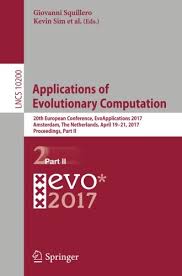 Embedded Grammars for Grammatical Evolution on GPGPU .European Conference on the Applications of Evolutionary Computation. EvoApplications 2017: Applications of Evolutionary Computation pp 789-805. LNCS
Embedded Grammars for Grammatical Evolution on GPGPU .European Conference on the Applications of Evolutionary Computation. EvoApplications 2017: Applications of Evolutionary Computation pp 789-805. LNCS
This paper presents an implementation of Grammatical Evolution on a GPU architecture. Our proposal, Embedded Grammars, implements the grammar directly in the code. Although more rigid, it allows to compute the decodification in parallel with the evaluation of the individuals. We tested three different grammars with a set of eight symbolic regression problems. The symbolic regression problems consists on obtaining a mathematical expression in the form y=f(x), in our case, from a set of 288 pairs x, y. The analysis of the results shows that Embedded Grammars are better not only in terms of execution time, but also in quality when compared with an implementation on a CPU. Speed-up results are also better than those presented in the literature.
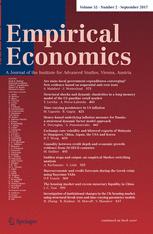 Exploring the influence of industries and randomness in stock prices .Empirical Economics 201, pp 1-21
Exploring the influence of industries and randomness in stock prices .Empirical Economics 201, pp 1-21
Empirical economics-Exploring the influence of industries and randomness in stock prices-This study explores the behavior of time series of historical prices and makes two additional contributions to the literature. In summarized form, we present an overview of each of the financial theories that discuss the movements of stock prices and their connection with industry trends. Within this theoretical framework, we first propose that prices be distinguished by following stock prices and a random-walk approach, and second, that the analysis of historical prices be broken down by industries. Similarities among price series are extracted through a clustering methodology based on an approach to non-computable Kolmogorov complexity. We model price series by following geometric Brownian motion and compare them to historical series of stock prices. Our first contribution confirms the existence of hidden common patterns in time series of historical prices that are clearly distinguishable from simulated series. The second contribution claims strong connections among firms carrying out similar industrial activities. The results confirm that stock prices belonging to the same industry behave similarly, whereas they behave differently from those of firms in other industries. Our research sheds new light on the stylized feature of the non-randomness of stock prices by pointing at fundamental aspects related to the industry as partial explanatory factors behind price movements.
 A meta-grammatical evolutionary process for portfolio selection and trading .Genetic Programming and Evolvable Machines
pp 1–21, 2017,
A meta-grammatical evolutionary process for portfolio selection and trading .Genetic Programming and Evolvable Machines
pp 1–21, 2017,
This study presents the implementation of an automated trading system that uses three critical analyses to determine time-decisions and portfolios for investment. The approach is based on a meta-grammatical evolution methodology that combines technical, fundamental and macroeconomic analysis on a hybrid top-down paradigm. First, the method provides a low-risk portfolio by analyzing countries and industries. Next, aiming to focus on the most robust companies, the system filters the portfolio by analyzing their economic variables. Finally, the system analyzes prices and volumes to optimize investment decisions during a given period. System validation involves a series of experiments in the European financial markets, which are reflected with a data set of over nine hundred companies. The final solutions have been compared with static strategies and other evolutionary implementations and the results show the effectiveness of the proposal.
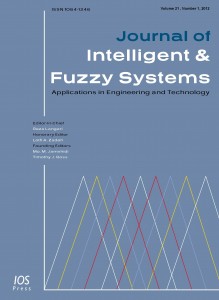 A hybrid automated trading system based on multi-objective grammatical evolution Journal of Intelligent and Fuzzy Systems. Volume XX, XXXX 2016, Pages XXX–XXX.
A hybrid automated trading system based on multi-objective grammatical evolution Journal of Intelligent and Fuzzy Systems. Volume XX, XXXX 2016, Pages XXX–XXX.
This paper describes a hybrid automated trading system (ATS) based on grammatical evolution and microeconomic analysis. The proposed system takes advantage from the flexibility of grammars for introducing and testing novel characteristics. The ATS introduces the self-generation of new technical indicators and multi-strategies for stopping unforeseen losses. Additionally, this work copes with a novel optimization method combining multi-objective optimization with a grammatical evolution methodology. We implemented the ATS testing three different fitness functions under three mono-objective approaches and also two multi-objective ATSs. Experimental results test and compare them to the Buy and Hold strategy and a previous approach, beating both in returns and in number of positive operations. In particular, the multi-objective approach demonstrated returns up to 20% in very volatile periods, proving that the combination of fitness functions is beneficial for the ATS.
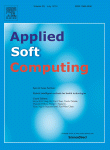 Using Evolutionary Algorithms to determine the residual stress profile across welds of age-hardenable aluminum alloys Applied Soft Computing. Volume 40, March 2016, Pages 429–438.
Using Evolutionary Algorithms to determine the residual stress profile across welds of age-hardenable aluminum alloys Applied Soft Computing. Volume 40, March 2016, Pages 429–438.
This paper presents an evolutionary based method to obtain the un-stressed lattice spacing, d0, required to calculate the residual stress profile across a weld of an age-hardenable aluminum alloy, AA2024. Due to the age-hardening nature of this alloy, the d0 value depends on the heat treatment. In the case of welds, the heat treatment imposed by the welding operation differs significantly depending on the distance to the center of the joint. This implies that a variation of d0 across the weld is expected, a circumstances which limits the possibilities of conventional analytical methods to determine the required d0 profile. The interest of the paper is, therefore, two-fold: First, to demonstrate that the application of an evolutionary algorithm solves a problem not addressed in the literature such as the determination of the required data to calculate the residual stress state across a weld. Second, to show the robustness of the approximation used, which allows obtaining solutions for different constraints of the problem. Our results confirm the capacity of evolutionary computation to reach realistic solutions under three different scenarios of the initial conditions and the available experimental data.
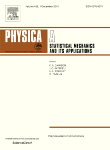 Modeling and predicting the Spanish Bachillerato academic results over the next few years using a random network model. Physica A: Statistical Mechanics and its Applications.
Modeling and predicting the Spanish Bachillerato academic results over the next few years using a random network model. Physica A: Statistical Mechanics and its Applications.
Academic performance is a concern of paramount importance in Spain, where around of30% of the students in the last two courses in high school, before to access to the labor market or to the university, do not achieve the minimum knowledge required according to the Spanish educational law in force. In order to analyze this problem, we propose a random network model to study the dynamics of the academic performance in Spain. Our approach is based on the idea that both, good and bad study habits, are a mixture of personal decisions and influence of classmates. Moreover, in order to consider the uncertainty in the estimation of model parameters, we perform a lot of simulations taking as the model parameters the ones that best fit data returned by the Differential Evolution algorithm. This technique permits to forecast model trends in the next few years using confidence intervals.
 Thermal-aware floorplanner for 3D IC, including TSVs, liquid microchannels and thermal domains optimization. Applied Soft Computing. Volume 34, July 2015, pages 164–177
Thermal-aware floorplanner for 3D IC, including TSVs, liquid microchannels and thermal domains optimization. Applied Soft Computing. Volume 34, July 2015, pages 164–177
3D stacked technology has emerged as an effective mechanism to overcome physical limits and communication delays found in 2D integration. However, 3D technology also presents several drawbacks that prevent its smooth application. Two of the major concerns are heat reduction and power density distribution. In our work, we propose a novel 3D thermal-aware floorplanner that includes: (1) an effective thermal-aware process with three different evolutionary algorithms that aim to solve the soft computing problem of optimizing the placement of functional units and through silicon vias, as well as the smooth inclusion of active cooling systems and new design strategies, (2) an approximated thermal model inside the optimization loop, (3) an optimizer for active cooling (liquid channels), and (4) a novel technique based on air channel placement designed to isolate thermal domains have been also proposed. The experimental work is conducted for a realistic many-core single-chip architecture based on the Niagara design. Results show promising improvements of the thermal and reliability metrics, and also show optimal scaling capabilities to target future-trend many-core systems.
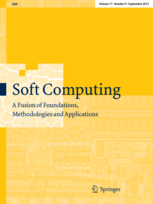 Optimizing L1 cache for embedded systems through grammatical evolution – Soft Computing
Optimizing L1 cache for embedded systems through grammatical evolution – Soft Computing
Nowadays, embedded systems are provided with cache memories that are large enough to influence in both performance and energy consumption as never occurred before in this kind of systems. In addition, the cache memory system has been identified as a component that improves those metrics by adapting its configuration according to the memory access patterns of the applications being run. However, given that cache memories have many parameters which may be set to a high number of different values, designers are faced with a wide and time-consuming exploration space. In this paper, we propose an optimization framework based on Grammatical Evolution (GE) which is able to efficiently find the best cache configurations for a given set of benchmark applications. This metaheuristic allows an important reduction of the optimization runtime obtaining good results in a low number of generations. Besides, this reduction is also increased due to the efficient storage of evaluated caches. Moreover, we selected GE because the plasticity of the grammar eases the creation of phenotypes that form the call to the cache simulator required for the evaluation of the different configurations. Experimental results for the Mediabench suite show that our proposal is able to find cache configurations that obtain an average improvement of 62 % versus a real world baseline configuration.
